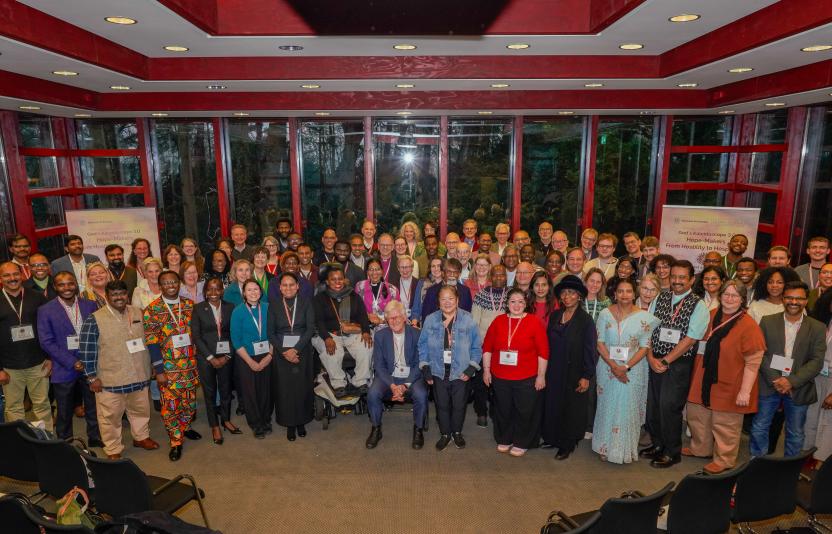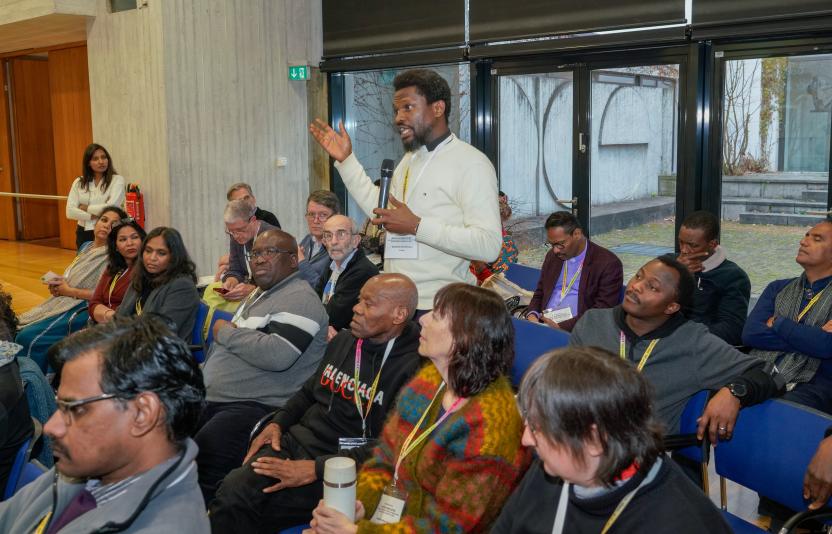The Nicene Creed from a Global Majority Heritage Perspective

Today's thought provoking reflection on the Nicene Creed was contributed by Rev Vinod Victor, who offers us a global majority heritage perspective: Victor Vinod is the Chaplain of the Anglican Church in Freiburg and Area Dean of German in the Diocese in Europe.
Beyond Uniformity: Rethinking Nicaea through Subaltern Theology
The Nicene Creed was formulated under imperial power, seeking not only theological clarity but also unity across a diverse empire. In the colonial era, however, it often travelled as part of a package that carried both the liberating gospel and the weight of cultural imposition. So, what does Nicaea mean for unity today, especially for a global body of people of faith gathered in places like Germany, where people from many nations worship together? A minister from Asia brings a perspective rooted outside of Europe but speaking into European contexts, often carrying the tension of both appreciation and critique.
The essential parameters guiding the lens through which the Creed is interpreted in a postcolonial context could be summarised as follows:
1. Unity or Uniformity? The Creed and the Suspicion of Power
The Nicene Creed was born in the shadow of the empire, where the drive for doctrinal consensus often carried more of an imperial agenda than a pastoral concern. The language of “heresy” has historically been used not simply for safeguarding truth but for silencing difference. A subaltern hermeneutics reminds us that genuine unity is not achieved by erasing difference but by learning to celebrate and live with it
2. From Universality to Imposition: Whose Creed Is It?
What was proclaimed as universal truth often became a cultural imposition—the views of a theological elite made normative for all. The Creed, as received in colonized lands, bore little sensitivity to local cultures, rhythms, and cosmologies. This exposes a tension: the universality of faith can either enrich particularity or, when mishandled, flatten it.
3. A Gift Entangled with Wounds: Memory of Colonial Christianity
For many global communities, the Creed is both sacred confession and a reminder of painful histories. It is prayed with faith but also with contested memory, echoing both communion with the saints and wounds from colonial mission. To confess the Creed today requires an honesty that acknowledges both its beauty and its baggage, holding together reverence and lament.
4. The Struggle for Local Tongues: Translation as Resistance and Renewal
Every act of translating the Creed into local languages is more than a linguistic exercise—it is a theological statement. It names the struggle to find authentic, contextual expressions of faith that resist missionary impositions and speak in the cadence of local life. The “missionary version” and the “contemporary version” of the Creed are not just two texts but symbols of an ongoing tension between imposed universality and contextual authenticity.
Imperial Echoes and Indigenous Voices: A Theological Re-hearing of the Nicene Creed
The Nicene Creed, confessed across centuries and continents, continues to be both a compass and a challenge for the church. When read from a Global Missional Hermeneutics perspective, it not only affirms timeless truths but also invites marginalized voices and suppressed memories into the centre of theological imagination.
1. One God in a World of Many gods – Maker of All Things
For communities historically branded as “pagan” or culturally inferior, the Creed’s declaration that God is the maker of heaven and earth, of all things visible and invisible, is profoundly liberating. It reclaims the dignity of every person and culture, affirming that all are the handiwork of the Divine Creator. In contexts where human-made gods of power, wealth, race, or empire trample upon the vulnerable, this affirmation remains a balm—reminding us that no community is outside God’s creative design.
2. Jesus as the Only Begotten Son – Uniqueness, Not Domination
The affirmation of Christ as the Only Begotten Son should not be weaponized as a tool of exclusion but embraced as a testimony to divine uniqueness. In a pluralist and multi-faith Europe, where religion can be used to draw boundaries of identity and belonging, the church must resist the temptation of exclusivism masquerading as orthodoxy. To confess Christ as God’s Son is to celebrate divine love made flesh, not to impose cultural hegemony. The Creed must be heard as a hymn of love, not a manifesto of hate.
3. The Judgment of the Living and the Dead – A Hope for Justice
For the marginalized, the proclamation that Christ will come again to judge the living and the dead is not a threat but a hope. It is a reminder that oppressive systems, colonial atrocities, and abuses carried out under the name of mission will not escape ultimate accountability. Earthly courts may fail, but divine justice does not. The Creed reminds the world’s wounded that history bends toward divine reckoning, where dignity denied will be restored, and every scar will be acknowledged before the Throne of Grace.
4. The Holy Spirit – Giver of Life Beyond Boundaries
The Spirit who gives life cannot be confined to Western paradigms that dismissed Eastern or indigenous spiritualities as invalid. The Spirit breathes life into refugee camps, migrant journeys, asylum struggles, and into every space where fear reigns. For the European church, to confess the Spirit as Life-Giver is to embrace a missional imagination beyond institutional walls, listening to the Spirit’s polyphonic voice in the cries of the displaced and the dreams of the marginalized.
5. The Church – Holy, Universal, Apostolic, and One in Diversity
The Creed’s ecclesiology must not erase diversity in the pursuit of unity. The church, to be truly one, must embody the rich variety of God’s design—multi-cultural, inter-generational, and inter-contextual. In Europe, the Anglican Communion, ecumenical partners and those beyond offer a living mosaic of traditions and practices. To be faithful to the Creed is not to suppress these differences but to celebrate them as facets of God’s universal mission.
6. Baptism – Forgiveness as Healing of Memories
To affirm baptism for the forgiveness of sins is to engage in the work of healing memories. Forgiveness is not shallow forgetting, but the profound restoration of dignity to peoples wounded by colonization, enslavement, and cultural erasure. The waters of baptism call the church to confront not only individual failings but also structural and historical sins against creation and subjugated peoples. True forgiveness, rooted in justice, becomes the path toward reconciliation and the re-weaving of God’s family.
7. Resurrection and Life of the World to Come – The Subaltern Hope
Though often overshadowed, the Creed ends with a vision of resurrection and eternal life. For marginalized faith communities, this is the promise that oppression, violence, and historical trauma do not have the final word. Resurrection is the defiant hope that even from the ashes of pain, new life will rise. The world to come is not an escape from history but its fulfilment—a new creation where justice and peace embrace.
Read through the lens of Global Missional Hermeneutics, the Nicene Creed should be re-read as more than doctrinal assertion. It can be used as a theological protest against domination, a pastoral balm for wounded memories, and a missional manifesto calling the church to embody God’s love in diversity, justice, and reconciliation.
Rev Vinod Victor
Rev Vinod Victor is the Chaplain of the Anglican Church in Freiburg and Area Dean of German in the Diocese in Europe.
You can download a copy of this article here: Beyond Uniformity: Rethinking Nicaea through Subaltern Theology


